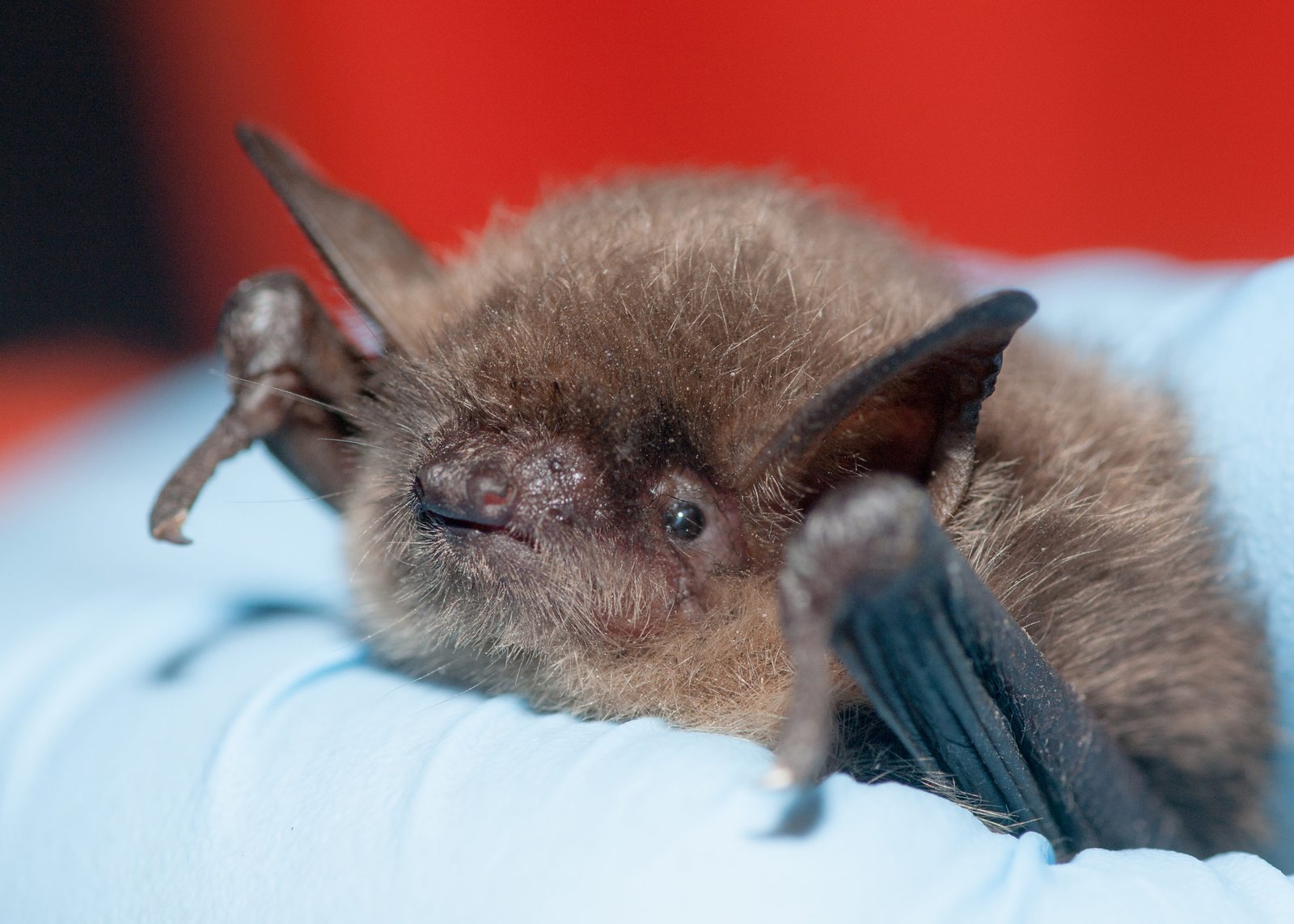Yuma Myotis: Myotis Yumanensis

The Yuma myotis is a small-eared, medium-sized, pale grayish to yellowish bat. The species of bat in North America is widely known to be associated with water bodies. Yuma Myotis feed on beetles, moths, flies, leafhoppers, lacewings, crickets, spiders, harvestmen.
Learn More: Woodland Bats
Description Yuma Bat
The Yuma myotis is a small-eared, medium-sized, pale grayish to yellowish bat. The dark membranes contrast fairly strongly within the fur.
Among the myotis species in North America, only the small-footed myotis are as pale in color. The small-footed myotis, which is smaller than the Yuma myotis, is more yellowish and less grayish. 1Go To Source webapps.fhsu.edu -“YUMA MYOTIS Myotis yumanensis (H. Allen, 1864)”
Yuma Myotis Habitat
In a variety of habitats, Myotis yumanensis is found, ranging from juniper and riparian woodlands to desert regions near open water.
Wherever there are rivers, streams, ponds, lakes, it’s almost guaranteed to find this species nearby. The M. Yumanensis species of bat in North America is widely known to be associated with water bodies.
These animals can be found in thousands, roosting in caves, attics, buildings, mines, underneath bridges, and other similar structures if not near water. Not much is known about the roosting of this species. 2Go To Source animaldiversity.org -“Myotis yumanensis Yuma myotis”
Range Of The Yuma Myotis In The U.S.
Myotis yumanensis ranges from British Columbia, Canada, to Baja California and southern Mexico across the western third of North America. Populations of the Yuma myotis are prevalent in Montana, Oklahoma, and Texas. 3Go To Source tpwd.texas.gov -“Yuma Myotis (Myotis yumanensis)”
Yuma Myotis Diet
Yuma Myotis feed on beetles, moths, flies, leafhoppers, lacewings, crickets, spiders, harvestmen, and other invertebrates. The presence of flightless insects in the diet shows that some prey is gleaned from the forests’ bottom.
Stomach content analyses show that moths, arachnids, leaf, grasshoppers, and beetles in western Oregon are the main prey.
This species’ slow and highly maneuverable flight is well suited to both aerial capture and prey gleaning from the foliage. This suggests that Yuma myotis are adapted for foraging within forests and along forest edges, together with the type of echolocation call.
Peak forging hours are one to two hours after sunset. The Yuma myotis typically forage 1.6km away from their day roost sites in pine forests. 4Go To Source wdfw.wa.gov -“Yuma myotis (bat) (Myotis yumanensis)”
Behavior Of The Yuma Bat
In the summer, Yuma myotis use buildings, bridges, cliff crevices, caves, mines, and trees for day roost sites. Large maternity colonies in Pacific Northwest buildings contain more bats than those in caves and mines.
In the Southwest, roosts with as many as 10,000 individuals were reported. Nursery roosts, particularly small brown myotis, are commonly shared with other species. Dates of occupancy at the colonies extend from early April to late October.
In nurseries, ambient air temperatures may reach 104oF in buildings, but in mines, only 57-68oF. Bats can raise these sites’ temperature substantially above ambient by roosting in clusters in domed mine areas, thereby reducing thermoregulatory costs. High humidity decreases the loss of evaporative water in bats that roost at high ambient temperatures.
It is also known that pregnant and nursing females roost alone in large living conifer and hardwood trees at sites with substantial forest cover near water. On average, females roosting in trees switch locations about every 5 days.
Males roost individually or in small groups during the day. Tree-roosting males in areas with high forest cover near water prefer large living conifer and hardwood trees.
In the Pacific Northwest, winter roost selection is poorly known. Hibernating Yuma myotis have been found in coastal Washington caves and Skamania County lava tubes. Hibernation occurs in eastern Washington and western Oregon from late October or early November until March. 5Go To Source eopugetsound.org -“Yuma Myotis (Myotis yumanensis)”
Yuma Myotis Reproduction Habits
In buildings, caves, mines, and under bridges, maternity colonies of several thousand females and young people may be found.
They prefer warm, dark sites roosting sites to raise their young.
In the warmest sites, when temperatures are low, individuals are clustered tightly to conserve heat. Bats seek cooler places if temperatures exceed 40°C, and individuals roost farther apart when the colony is too warm. 6Go To Source nrm.dfg.ca.gov -“California Wildlife Habitat Relationships System”
Ecology Of Yuma Myotis
Yuma Myotis emerge when it is almost dark and often forge low above water. Sexes are segregated; males roost in small groups or individually. Maternity colonies can contain several hundred people. Females have one young, generally born at the end of June or July. 7Go To Source fieldguide.mt.gov -“Yuma Myotis – Myotis yumanensis”
Threats To The Yuma Myotis Species
Closure of abandoned mines without adequate surveys, certain forest management practices, and maternity roost disturbance in caves/buildings may affect Yuma myotis.
Since this species frequently occurs in anthropogenic structures, it is susceptible to pest control’s destructive activities. There may be harm caused by riparian management practices.
Sources:
- “Kansas Mammal Atlas: Yuma Myotis.” Kansas Mammal Atlas, Sternberg Museum of Natural History, Fort Hays State University, 13 July 2017, webapps.fhsu.edu/ksmammal/account.aspx?o=32&t=253.
- Sims, K. 2000. “Myotis yumanensis” (On-line), Animal Diversity Web. Accessed January 08, 2021 at https://animaldiversity.org/accounts/Myotis_yumanensis/
- “Yuma Myotis (Myotis Yumanensis).” Texas Parks & Wildlife, Texas Parks and Wildlife Department, tpwd.texas.gov/huntwild/wild/species/yuma. Accessed 8 Jan. 2021.
- “Yuma Myotis (Bat) | Washington Department of Fish & Wildlife.” Washington Department Of Fish And Wildlife, WDFW, wdfw.wa.gov/species-habitats/species/myotis-yumanensis#desc-range. Accessed 8 Jan. 2021.
- “Yuma Myotis (Myotis Yumanensis).” Encyclopedia of Puget Sound, Puget Sound Institute, 7 June 2013, www.eopugetsound.org/articles/yuma-myotis-myotis-yumanensis.
- “YUMA MYOTIS Myotis Yumanensis.” California Department Of Fish And Wildlife, State of California, nrm.dfg.ca.gov/FileHandler.ashx?DocumentID=2319. Accessed 8 Jan. 2021.
- Yuma Myotis — Myotis yumanensis. Montana Field Guide. Montana Natural Heritage Program and Montana Fish, Wildlife and Parks. Retrieved on January 8, 2021, from http://FieldGuide.mt.gov/speciesDetail.aspx?elcode=AMACC01020
